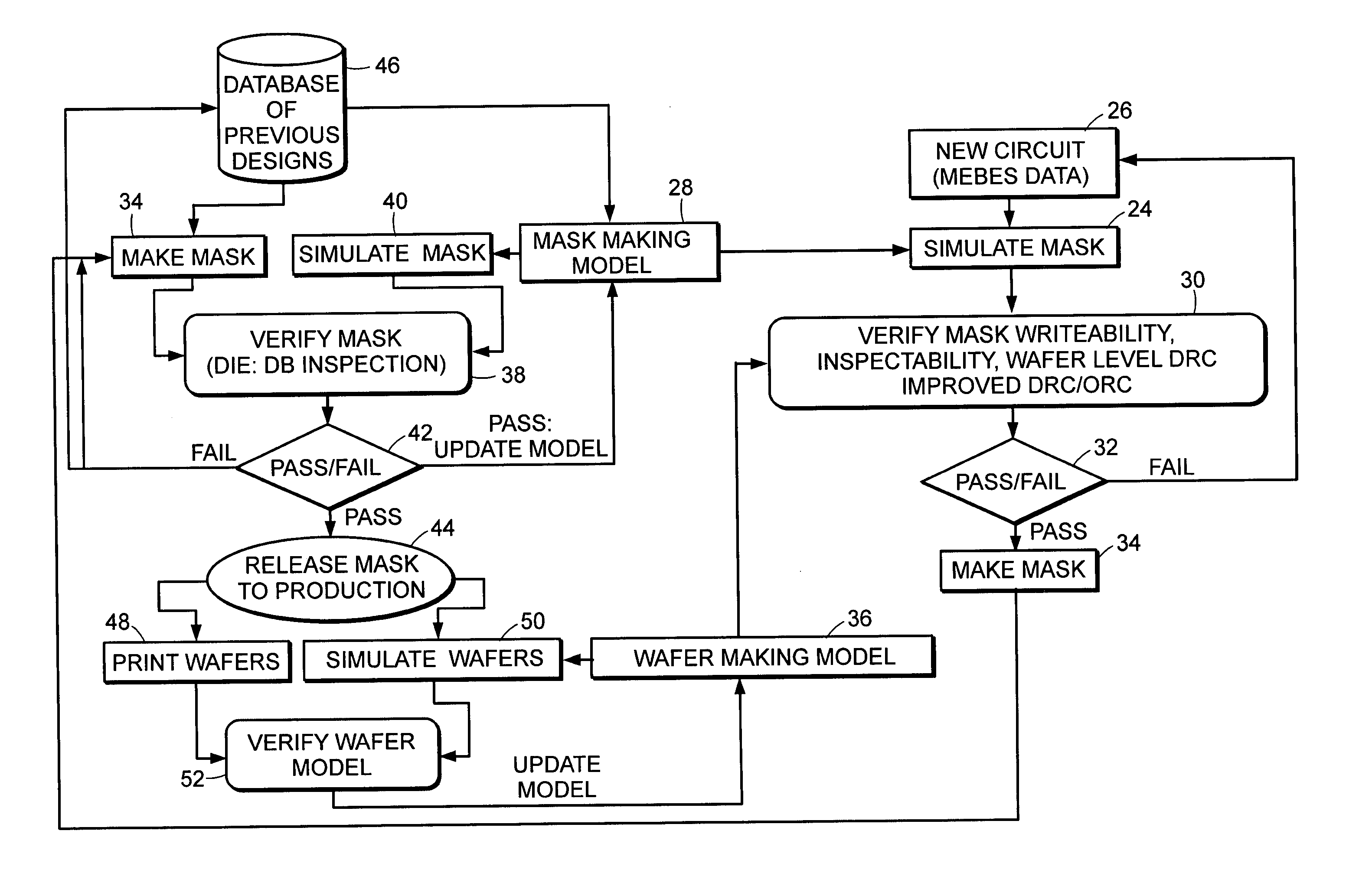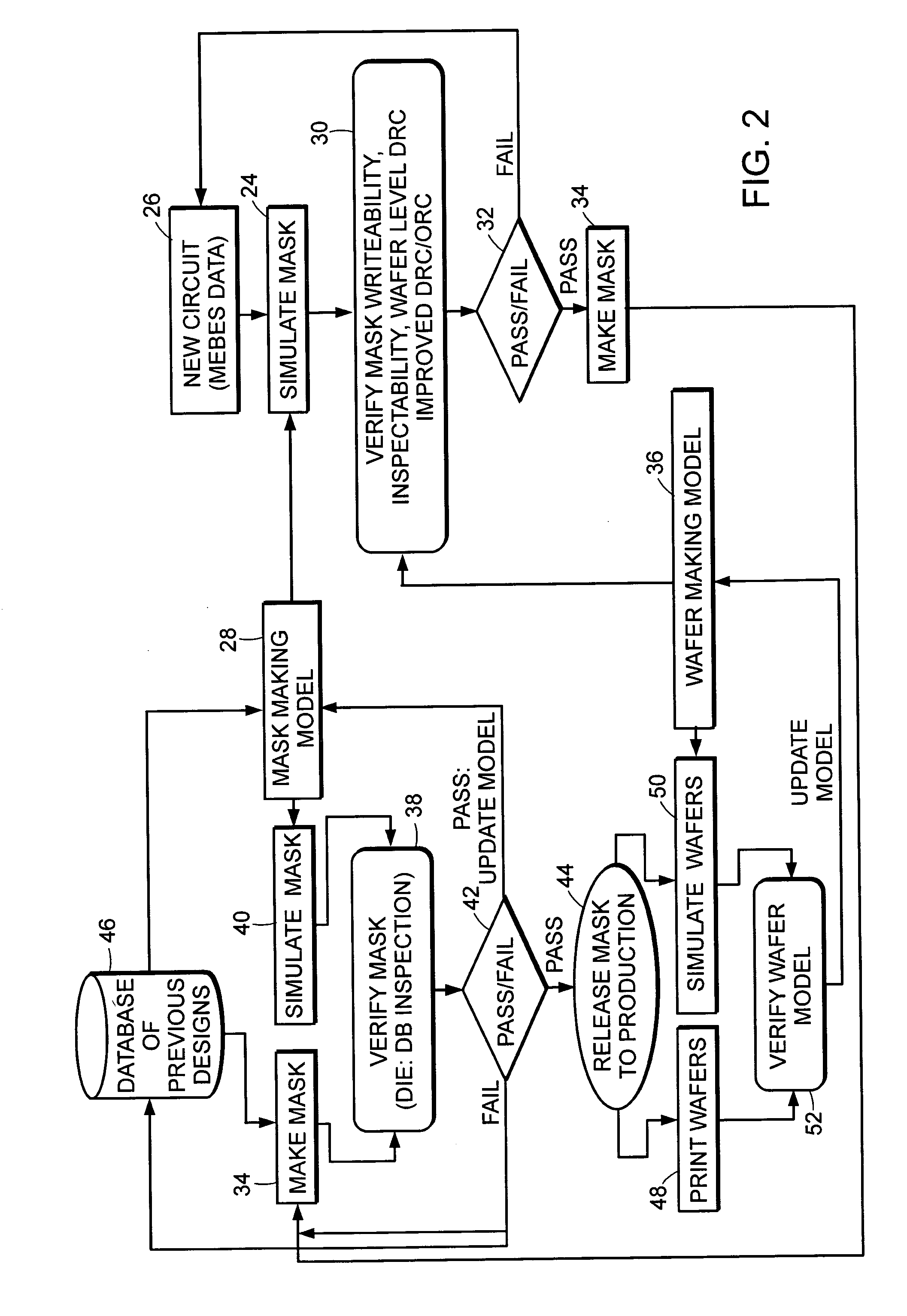Methods, systems, and carrier media for evaluating reticle layout data
a technology of layout data and carrier media, applied in the field of methods, systems and carrier media for evaluating reticle layout data, can solve the problems of direct impact, increased complexity of integrated circuit design, and increased complexity of design of integrated circuits, so as to achieve the effect of successful reticle manufactur
- Summary
- Abstract
- Description
- Claims
- Application Information
AI Technical Summary
Benefits of technology
Problems solved by technology
Method used
Image
Examples
Embodiment Construction
[0037] The terms “reticle” and “mask” are used interchangeably herein. A reticle generally includes a transparent substrate such as glass, borosilicate glass, and fused silica having opaque regions formed thereon in a pattern. The opaque regions may be replaced by regions etched into the transparent substrate. Many different types of reticles are known in the art, and the term reticle as used herein is intended to encompass all types of reticles.
[0038] A process for manufacturing a reticle is similar to a wafer patterning process. For example, the goal of reticle manufacturing is generally to form a pattern in an opaque material such as a relatively thin chrome layer on a substantially transparent substrate such as glass. In addition, other appropriate opaque materials that may be used for reticle manufacturing include, but are not limited to, chromium, chromium oxide, chromium nitride, and molybdenum / silicon. Appropriate thicknesses for chrome layers may be approximately 1000 Å an...
PUM
 Login to View More
Login to View More Abstract
Description
Claims
Application Information
 Login to View More
Login to View More - R&D
- Intellectual Property
- Life Sciences
- Materials
- Tech Scout
- Unparalleled Data Quality
- Higher Quality Content
- 60% Fewer Hallucinations
Browse by: Latest US Patents, China's latest patents, Technical Efficacy Thesaurus, Application Domain, Technology Topic, Popular Technical Reports.
© 2025 PatSnap. All rights reserved.Legal|Privacy policy|Modern Slavery Act Transparency Statement|Sitemap|About US| Contact US: help@patsnap.com



